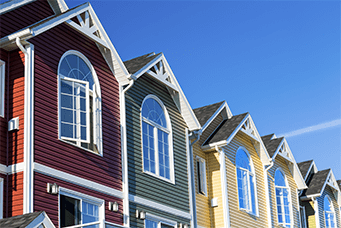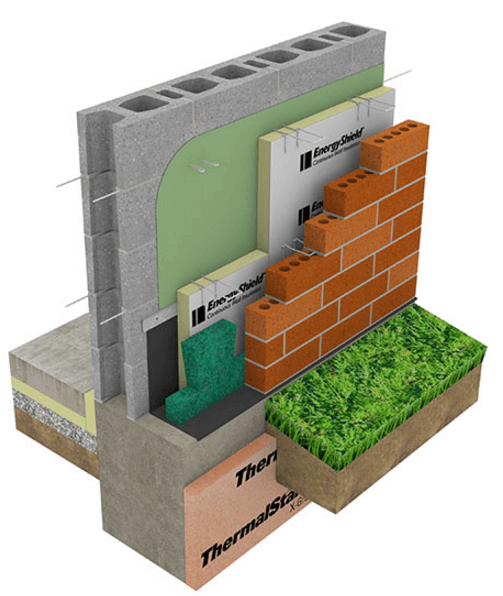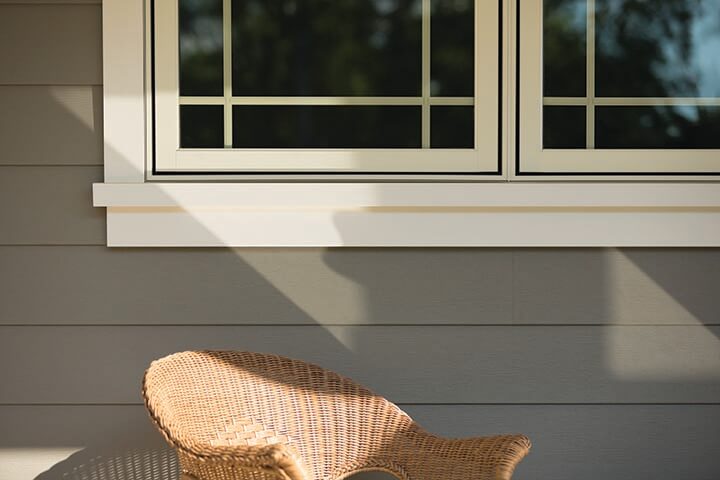Your Guide to Budgeting for New Siding
 Installing new siding is a major home improvement project. It can do a lot for your home – refreshing its look, increasing its property value, and enhancing its energy efficiency – but it can also be an expensive undertaking. Knowing what to expect (including understanding your options and costs) will ensure you choose the siding that’s best for you and your home.
Installing new siding is a major home improvement project. It can do a lot for your home – refreshing its look, increasing its property value, and enhancing its energy efficiency – but it can also be an expensive undertaking. Knowing what to expect (including understanding your options and costs) will ensure you choose the siding that’s best for you and your home.
We’ve put together this guide to help you plan and budget for your new siding:
1. Understand the Scope of Your Project
The size of the job will play a major role in dictating the price, whether you’re focusing on redoing only one or two walls for an aesthetic change or tackling your whole home for a comprehensive update.
Remember that precise measurements matter, which is why contractors need to calculate each rectangular and square section individually for accurate square footage. Cutting corners isn’t an option when it comes to your home. If it’s not properly protected and weatherproofed, moisture will be able to more easily find its way in and cause costly damage down the road.
2. Consider What Else Could or Needs to Be Done in Tandem with New Siding
 Installing siding can make it easier to tackle other home improvement projects like:
Installing siding can make it easier to tackle other home improvement projects like:
- Adding exterior wall insulation, a job that will be most easily accomplished when siding is being replaced.
- Fixing damage caused by water or pests. Often these problems will be apparent before the old siding is taken down, letting your home contractor provide advice on how to best remedy them.
Keep in mind that it is possible for unforeseen issues to crop up, including something like out-of-date wiring or the presence of lead paint, complications more likely to affect older homes. If you have any questions or concerns about your siding and home, discuss them with your contractor. They’ll be able to offer guidance to ensure you’re prepared.
3. Choose the Right Type of Siding
Selecting the right material is often a balancing act between appearance, durability, and cost.
Three of the most popular siding options today are vinyl, fiber cement, and wood:
1. Vinyl Siding
Vinyl is the most popular type of siding in North America, being renowned for its durability and affordability:
- Long-Lived Colours: Many types of vinyl siding are now coated with specially formulated low-gloss finishes to keep the colour looking vibrant year after year.
- Visually Pleasing Appearance: Vinyl siding is available in a variety of colours and textures. It can even be made to look like wood shingles, helping you achieve a specific look or maintain the flow if you’re adding an extension to a wood-clad home.
- Tough Against the Elements: Vinyl siding is resistant to both dents and water, forming a barrier to keep your exterior and interior walls protected.
Vinyl siding is the most cost effective option available and typically lasts for upwards of 20 years.
What are the pros and cons of choosing vinyl siding for your home? Read our blog to find out!
2. Celect® Cellular Composite Siding
 Celect® Cellular Composite Siding is designed to give homeowners the look of real wood without the necessary maintenance. Some of its key benefits include:
Celect® Cellular Composite Siding is designed to give homeowners the look of real wood without the necessary maintenance. Some of its key benefits include:
- Attractive Appearance: It’s made with patented interlocking joints to ensure a seamless finish, comes in 15 different colours, and is available in cedar, board-and-batten, and shake profiles.
- Simple Installation: Alongside interlocking joints, the gravity lock design helps to keep boards straight (no waving, buckling, or gapping) and eliminate the need for caulking.
- Easy Maintenance: Celect® Cellular Composite Siding has been engineered to repel mildew, mould, and insects and never needs repainting or recaulking.
- Impressive Energy Efficiency: Celect® Cellular Composite Siding incorporates a number of innovations (the Kynar Aquatic® coating, a unique white substrate, and more) to insulate better and reduce energy consumption.
Celect® Cellular Composite Siding comes with a 25-year warranty on finish.
3. Wood Siding
Wood siding is famously well loved by homeowners for its distinctive, classic appearance.
Wood boasts additional benefits like being:
- Lightweight, making it easy to handle and cut.
- Eco-friendly, as it’s made from a renewable resource and is biodegradable.
- Simple to repair if it’s damaged, since individual components can be quickly removed and replaced.
Wood siding is the most expensive type of siding available, though it also has the longest lifespan – lasting for upwards of 30 years with proper maintenance. That means regularly inspecting it for weak spots (rot caused by moisture penetration, evidence of animal activity, etc.).
A wood-based alternative to consider is composite siding, which is made from heated and compressed wood fibres. It requires less maintenance and is more affordable than wood shingles or shakes.
What are the pros and cons of choosing wood siding for your home? Read our blog to find out!
Being informed about your options and knowing what to expect will ensure you make the choice that suits your budget and home, guaranteeing the best results.
At Quality Exteriors, we are committed to providing the highest quality siding (including vinyl, fiber cement, and wood). Contact us today to schedule your free in-home estimate!
Visit our siding gallery to see our quality workmanship.
Serving homeowners in St. Catharines, Burlington, Hamilton, Niagara, and Oakville.
Like this? You might also like:
- Why Quality Siding Is a Good Investment in Your Home
- 10 Signs Your Home’s Siding Needs Replacing
- 6 Problems Caused by Not Maintaining Your Vinyl Siding
- When to Request an Estimate for Exterior Work - February 26, 2020
- Merry Christmas from Quality Exteriors - December 18, 2019
- Quality Exteriors Listed In Top 3 Window Companies In St. Catharines - December 5, 2019






